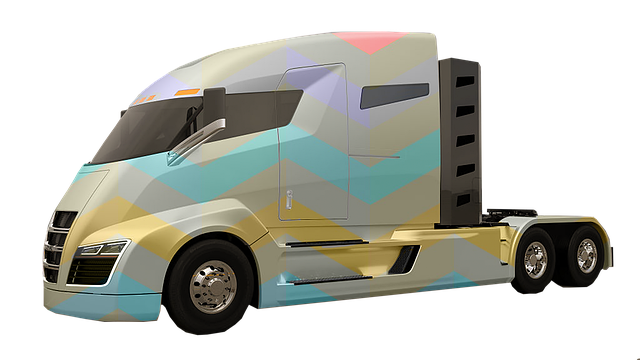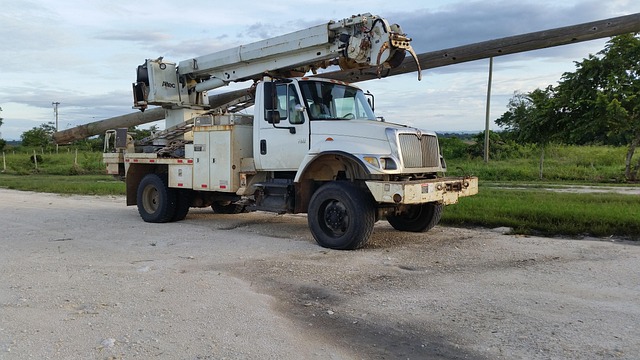Looking to register your car in California? This comprehensive guide walks you through the entire process, from understanding the crucial VIN verification to gathering essential documents and paying fees. We’ll break down each step, ensuring a smooth experience. Learn how to confirm your Vehicle Identification Number (VIN) with a reliable verifier, acquire necessary papers, and follow a straightforward registration process with the California DMV. By following these steps, you’ll be legally registered and on the road in no time.
- Understanding the Vehicle Identification Number (VIN) Verification Process
- Gathering Necessary Documents for Car Registration in California
- Step-by-Step Guide to Registering Your Vehicle with the DMV
- Paying the Registration Fees and Taxes
- Maintaining Your California Vehicle Registration and Insurance Requirements
Understanding the Vehicle Identification Number (VIN) Verification Process

Understanding the Vehicle Identification Number (VIN) Verification Process is a crucial step when registering your car in California. The VIN, a unique 17-character code, serves as the vehicle’s fingerprint. It contains vital information about the make, model, year, and manufacturing details, making it a critical element for registration. In California, a vin verifier is often used to ensure the accuracy of these details and verify that the vehicle isn’t stolen or has any outstanding issues.
This process typically involves a vin inspection, where a professional uses specialized tools to cross-reference the VIN with state databases. Mobile vin verification services are also available, offering convenience by performing the inspection right at your location. This ensures a smooth registration experience without the hassle of visiting a DMV office.
Gathering Necessary Documents for Car Registration in California

Before registering your car in California, ensure you have all the required documents ready. This process is designed to verify ownership and ensure the vehicle meets safety standards. One crucial step is obtaining a Vehicle Identification Number (VIN) verification or inspection. You can opt for a mobile VIN inspection service that provides convenience by coming to your location.
Gathering these documents, including proof of insurance, registration from the previous state, and a valid driver’s license, will streamline the registration process at the California Department of Motor Vehicles (DMV). Additionally, be prepared to demonstrate compliance with environmental standards and any applicable fees or taxes for car registration in the Golden State.
Step-by-Step Guide to Registering Your Vehicle with the DMV

Registering a car in California might seem like a daunting task, but with a straightforward step-by-step guide, it can be accomplished efficiently. Here’s your go-to process for ensuring a smooth registration experience:
1. Gather Required Documents: Start by collecting essential documents such as the Vehicle Identification Number (VIN) verifier, proof of ownership, vehicle inspection certificate, and valid identification like a driver’s license. If you’ve recently purchased a car through a dealership or private seller, they might provide some of these documents. Otherwise, obtain them from previous owners or conduct a mobile vin inspection to verify crucial details about your vehicle.
2. Visit the DMV Website: Navigate to the California Department of Motor Vehicles (DMV) website to initiate the registration process online. You’ll find detailed instructions and forms for registering your vehicle. Fill out the application accurately, ensuring you select the correct vehicle type and providing accurate information regarding previous registrations. After completing the form, submit it along with required fees, typically paid via credit card or check. As an alternative to online registration, you can also schedule a visit to a local DMV field office for manual submission of documents, including a vin inspection if needed.
Paying the Registration Fees and Taxes

When registering your car in California, you’ll need to pay various fees and taxes. The California Department of Motor Vehicles (DMV) charges a registration fee that covers vehicle registration, license plates, and vehicle emissions testing. Additionally, a sales tax is applied based on the purchase price of the vehicle. It’s essential to have accurate information regarding the car’s history, including its previous ownership and any accidents or damage, as these factors influence the overall cost.
One convenient service that can assist in this process is a mobile vin verification or inspection. Using a tool like this, which often includes a vin verifier, allows for remote checking of your vehicle’s information, ensuring all details are correct before heading to the DMV. This can save you time and effort by streamlining the initial steps of registration, especially when dealing with out-of-state purchases or older vehicles that may have complex histories.
Maintaining Your California Vehicle Registration and Insurance Requirements

Maintaining proper registration and insurance for your vehicle is crucial when driving in California. After registering your car, it’s essential to stay up-to-date with renewal deadlines. Typically, registrations need to be renewed annually, but the process may vary based on certain circumstances. One key aspect of ownership is ensuring your Vehicle Identification Number (VIN) is accurately recorded and verified. Using services like mobile VIN verification or a VIN inspection can help you keep this crucial information current and accessible.
Regularly checking your insurance coverage and confirming it meets California’s minimum requirements is also vital. This includes verifying that your policy includes liability, collision, and comprehensive deductibles as needed. With proper documentation and timely renewals for both registration and insurance, you’ll be well on your way to navigating California’s roads with peace of mind.
Registering a car in California involves several straightforward steps, from understanding your VIN’s verification process to gathering essential documents and paying fees. By following our step-by-step guide and ensuring you maintain proper registration and insurance, you’ll have a smooth experience keeping your vehicle up-to-date with the DMV. Remember, a valid VIN verifier is crucial for this initial verification step. With these simple procedures, you’ll be cruising down California’s highways in no time while adhering to state regulations.
